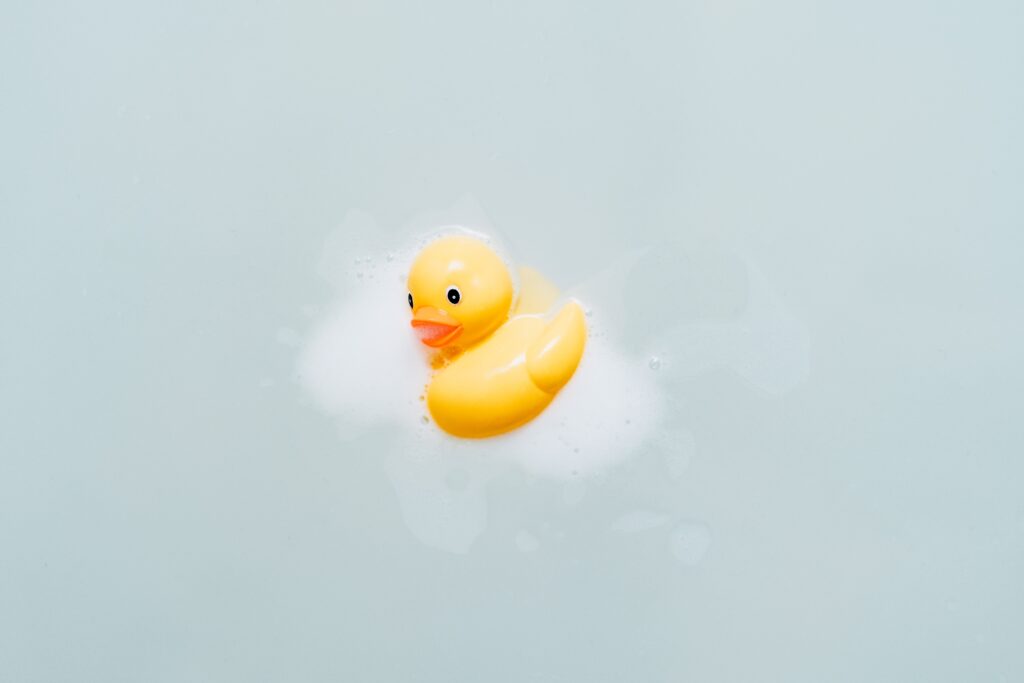Maintaining your child’s personal hygiene can be challenging at times, in this article we explain how to get an autistic child to bathe.
Autism and bath time
Bathing can be a challenging task for many autistic children due to sensory issues, resistance to change, and difficulties with transitions.
However, with patience, understanding, and a gentle approach, parents can create a positive and comfortable bathing experience for their autistic child.
We have come up with some practical tips, and strategies to make bathing a more enjoyable and successful activity for all parties.

Embed a routine
It is commonly known that autistic children often thrive on a sense of routine. Knowing what is coming for them can reduce anxiety and make them happier to comply.
To assist with a routine you could try;
Using a schedule board – A schedule board for the days activity can be beneficial in a number of ways. You can highlight for example that after dinner it is time for a bath, this way your child will mentally prepare themselves.
A schedule board can also be used for the bath itself in that you could map out the different processes involved. An example would be to highlight the sequence of filling the bath, adding bubbles, your child gets in, you wash their hair and so on.
Having a set time for baths – In a similar way to how a schedule board may help your child, you could set a specific time of day for baths.
Depending on if you plan to bathe your child every day you could also set specific days of the week.
Both of these structures are likely to make your child feel more comfortable with the process. It will not for example sneak up on them and take them by surprise.
Give your child a 5 minute warning – Lastly on the subject of routines you could embed a warning system.
Depending on the success of the schedule board and set times you could give your child 5 minutes notice before a bath.
Once more this will give them some last second moments to become comfortable with the prospect of bathing.
Sensory preparations
Sensory sensitivities can significantly impact a child’s comfort during bathing.
Adjusting the bathing environment and incorporating sensory strategies can help ease anxiety.
Consider the following:
Water Temperature – Ensure the water is at a comfortable temperature, neither too hot nor too cold. Test the water beforehand to avoid any surprises.
You could even consider buying a thermometer and incorporating taking the baths temperature as part of the routine.
Your child may like this reassurance that the temperature is as they are expecting.
Bathing Products – Depending on your child’s needs you could consider choosing mild, fragrance-free soaps and shampoos.
These are less likely to overwhelm your child’s senses. Experiment with different products until you find ones that your child finds comfortable.
Water depth – You could llow your child to have some control over water depth. Some children may prefer shallow baths, while others may find deeper baths more calming.
You could even make a mark on the side of the bath, once more adding to the consistency for your child.
Sensory tools – You could introduce sensory-friendly bath accessories such as textured washcloths, soft sponges, or bath brushes.
These tools can provide additional tactile input and help desensitise your child to touch during bathing.
Visual supports and communication
Communication struggles may be adding to your difficulties in bathing your child.
Clear communication and visual supports are vital for facilitating understanding and reducing anxiety during the process. Consider the following strategies;
Use visual cues – Use visual cues, such as pictures or labels, to indicate the order of tasks during bathing or the initiation of the process.
You could for example show your child a sponge when you give them their 5 minute warning before the bath.
These prompts can provide guidance and structure, making the process more manageable for your child.
Communication channels – Establish open and effective communication with your child if you can.
Encourage them to express their feelings, concerns, or preferences about bathing.
Use their preferred communication method, whether verbal, non-verbal, or assistive technology, to ensure their needs are respected.
Use technology to inform – If like many others, your child likes watching YouTube you can point their attention towards bathing videos.
Try to find either channels dedicated to or one off videos that teach children about the importance of washing.
Who knows, if they see their hero bathing then they may be more receptive.
Summary – How to get an autistic child to bathe
Bathing an autistic child requires patience, flexibility, and a tailored approach that considers their sensory sensitivities and individual needs.
By establishing a structured routine and addressing sensory considerations, parents and can create a nurturing and positive bathing experience for their child.
Remember, each child is unique, so it’s important to adapt these strategies to suit your child’s specific needs and preferences.
With time, understanding, and a gentle approach, bathing can become a more enjoyable and successful activity.

